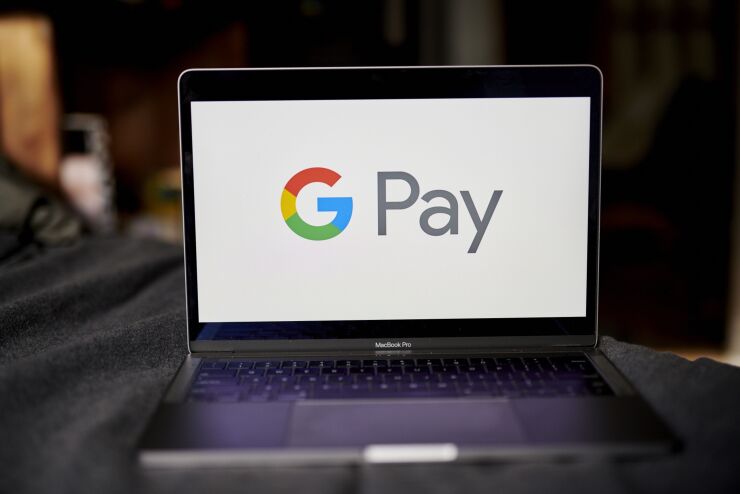Google has added several security features as part of its recent payments revamp, including one that's designed to combine streamlined checkout with an authentication method that isolates individual transactions from outside parties.
"There's a question that people have. Should I give my credit card number to a merchant? It's that kind of friction and risk we are trying to reduce by generating a virtual card," said Peeyush Ranjan, general manager and vice president at Google Pay.
Google this week started making virtual cards available for American Express's consumer, business and corporate clients, joining Capital One Financial among financial institutions that support Google's virtual cards.
The cards can be used online when accessing Chrome Autofill, which digitally populates card numbers into checkout pages. Google creates new "tokenized" substitute numbers to authenticate payments in Chrome Autofill, thus shielding the merchant and other parties from the consumer's actual card number while maintaining the automatic field population at the point of sale.

The payment industry already accommodates digital substitutes for card account numbers. Other payment companies are using forms of virtual card issuance to provide more control over payments, to reduce business expenses, or to potentially enable automatic payments under certain circumstances. And all four major U.S. card companies use tokenization, or substitutes for card numbers, to create a standard user experience for e-commerce payments, similar to the ubiquitous experience for plastic cards that has existed for years.
Visa and Mastercard will be added as partners for Google's virtual cards shortly, according to Google, adding it's also pursuing partnerships with banks. Visa and Mastercard did not provide comments by deadline.
Ranjan likened the process to tokenization, adding it's designed to provide consumers peace of mind if using a website or viewing an invoice that's unfamiliar. "The [virtual card] only goes to that merchant for that payment," Ranjan said. "It can't be used if it's hacked."
Google developed the virtual cards as part of a
The restructuring includes other security measures such as enabling third parties such as retailers, fintechs, insurance firms and other payment apps to create a digital identity for Google Wallet access, as well as technology that broadens the type of devices that can access Google Wallet and Google Pay.
"As money turns digital around the world, everyone should go and take advantage of that," Ranjan said.Google's payments redesign is similar to Apple's, which also stores credentials in a wallet app and supports payments through Apple Pay.
Apple also recently added
Beyond security, virtual issuance provides opportunities to tailor how payments are made, according to Jacob Morgan, principal analyst at Forrester Research, adding a tokenized or virtual card can execute a specific payment, or a series of related yet distinct transactions, without requiring the use of the cardholder's account information.
"A consumer can book travel with an aggregator site, for example, and pay for the entire trip through the aggregator. The aggregator can then split the payment to the hotel, train, airline, etc., and send these parties their portion of the money in the form of a token," Morgan said.
The innovation also has ramifications for programmable payments, which refer to transactions that are automatically executed when certain conditions are met. Programmable payments, often referred to as smart contracts, are common in blockchain environments, or for transactions involving digital assets such as stablecoins.
"We launched virtual cards with a focus on consumer security and convenience for now, but we are always looking at how we can support the ecosystem in enabling other use cases down the road," said Rajiv Appana, director of product for Google Pay. "We're working with our partners to identify what would create the richest experience for their customers."
The card brands are also using virtual card or virtual issuance technology.
The virtual card market totaled about $1.8 billion in payments in 2022, according to
Other examples include
"Many use cases revolve around the ability to fund these cards in real time and the fact that they are temporary, which helps to protect the actual card number for security purposes," Shipper said, adding one interesting use case is allowing the consumer to generate a temporary virtual card to sign up for trial offers and not worry about being charged when the trial period ends. On the commercial side, there are also a ton of use cases, Shipper said.
"The expense management benefits are obvious. I'm also seeing insurance companies issue virtual cards for insurance payouts."






